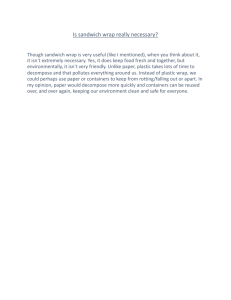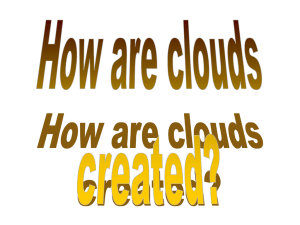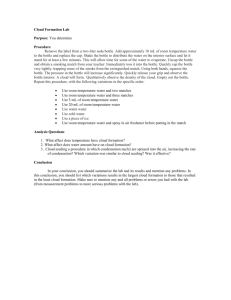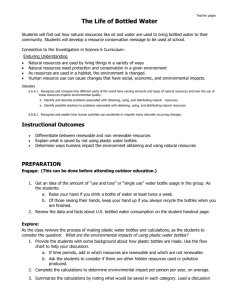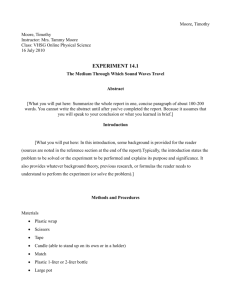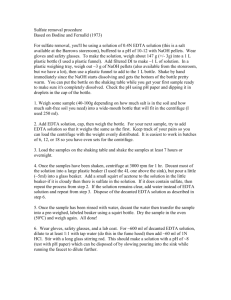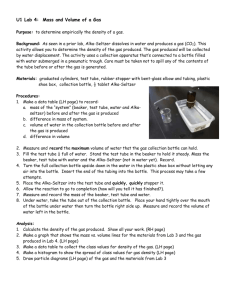E.ES.07.81 Fall 12
advertisement
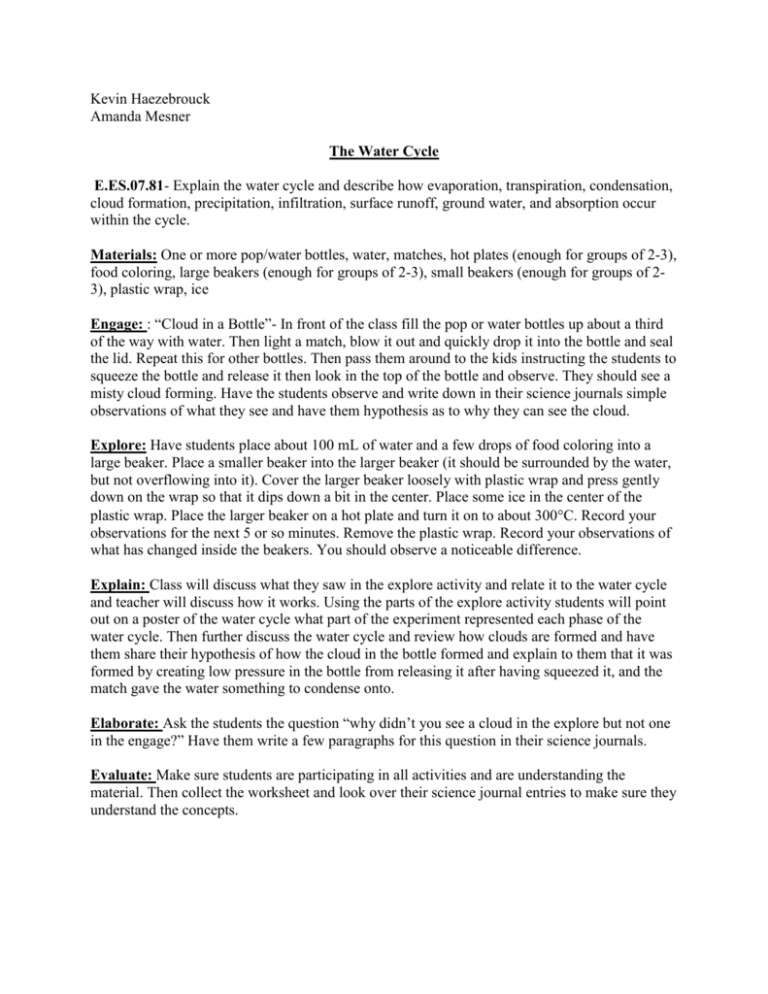
Kevin Haezebrouck Amanda Mesner The Water Cycle E.ES.07.81- Explain the water cycle and describe how evaporation, transpiration, condensation, cloud formation, precipitation, infiltration, surface runoff, ground water, and absorption occur within the cycle. Materials: One or more pop/water bottles, water, matches, hot plates (enough for groups of 2-3), food coloring, large beakers (enough for groups of 2-3), small beakers (enough for groups of 23), plastic wrap, ice Engage: : “Cloud in a Bottle”- In front of the class fill the pop or water bottles up about a third of the way with water. Then light a match, blow it out and quickly drop it into the bottle and seal the lid. Repeat this for other bottles. Then pass them around to the kids instructing the students to squeeze the bottle and release it then look in the top of the bottle and observe. They should see a misty cloud forming. Have the students observe and write down in their science journals simple observations of what they see and have them hypothesis as to why they can see the cloud. Explore: Have students place about 100 mL of water and a few drops of food coloring into a large beaker. Place a smaller beaker into the larger beaker (it should be surrounded by the water, but not overflowing into it). Cover the larger beaker loosely with plastic wrap and press gently down on the wrap so that it dips down a bit in the center. Place some ice in the center of the plastic wrap. Place the larger beaker on a hot plate and turn it on to about 300C. Record your observations for the next 5 or so minutes. Remove the plastic wrap. Record your observations of what has changed inside the beakers. You should observe a noticeable difference. Explain: Class will discuss what they saw in the explore activity and relate it to the water cycle and teacher will discuss how it works. Using the parts of the explore activity students will point out on a poster of the water cycle what part of the experiment represented each phase of the water cycle. Then further discuss the water cycle and review how clouds are formed and have them share their hypothesis of how the cloud in the bottle formed and explain to them that it was formed by creating low pressure in the bottle from releasing it after having squeezed it, and the match gave the water something to condense onto. Elaborate: Ask the students the question “why didn’t you see a cloud in the explore but not one in the engage?” Have them write a few paragraphs for this question in their science journals. Evaluate: Make sure students are participating in all activities and are understanding the material. Then collect the worksheet and look over their science journal entries to make sure they understand the concepts.


